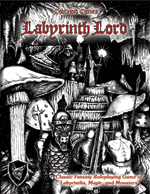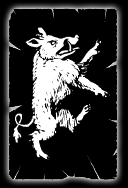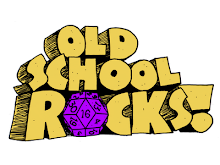This is part five of a five-part series in which I describe the most interesting features of Crimson Blades of Ara, the FRPG that I co-created with Dave Miller in the 1990s. The prior installments discussed the game's Introduction, Character Generation chapter, its Combat chapter, and its Magic chapter. This last post of the series will cover the Table of Contents and the unfinished Referee chapter.
Crimson Blades of Ara's voluminous Table of Contents reveals what ambitious young lads Dave and I were back then. The fact that I banged out four-fifths of what that TOC promises amazes me now. Then again, all that labor was spread out over nearly a decade of gaming, co-creating, and (for me) writing.
The great unfinished chapter of CBoA is the Referee chapter. The only two sections of this chapter that were ever completely finished were the section on "The Order of Palladins" and the list of indigenous and summoned Arandish monsters.
Palladins in CBoA were treated as a kind of "Prestige Class" (to use the contemporary parlance) that virtuous warriors could attempt to join once they reached certain (rather high) skill levels. I don't think we ever had a Palladin PC, though I think at least one character had the intention of one day joining the Order.
Our list of Arandish monsters is quite interesting in retrospect, particularly since it is divided into two sections: indigenous (native) Arandish monsters, and Dimons, i.e., summoned monsters who were brought to Ara via magic and then never sent back to their home dimensions. What I find really interesting is how few indigenous monsters we included: dragonkind, the undead, giants, trolls, Rakars (scorpion-men who live in the extreme southern reaches of Mizar and on Rakar's Peninsula) and a few monsters derived from Earth animals (wolves, bears, etc.) -- and that's it! ALL OTHER MONSTERS including orcs, hobgoblins, giant spiders, blaag, devils, and the dreaded Sloth of Death were brought to Ara via summoning. In fact, numerically speaking, the majority of Arandish monsters originated from other dimensions.
What this reveals is the extent to which Dave and I conceived of Ara as a humans-and-humanoids-o-centric world. What other monsters existed in Ara we wanted to have on-board for a reason, and as I have discussed before, during the years we played CBoA, I heavily favored human / NPC-type opponents over classic D&D-style "monsters." My guess now is that that decision was at least partly based upon a desire to escape the "Monster Manual" mentality of AD&D, where there seemed to be tons of weird monsters around for no really good reason. Of course, it escaped us somewhat that the MM was most likely intended as a toolkit to be cherry-picked, NOT a comprehensive statement of what the default AD&D setting had to be. But nonetheless, WE wanted a more coherent game setting than AD&D seemed to offer; hence CBoA.
To sum up, CBoA is clearly a response / reaction to AD&D, an attempt to move away from class-and-level mechanics, and an attempt by Dave and me to distance ourselves from many of the assumptions of D&D. CBoA is itself somewhat derivative of other works, unwittingly or no. The whole concept of varying types of trolls (and trolls as an important indigenous Arandish monster race) no doubt comes from my early exposure to Tunnels and Trolls. Our "size rating" attribute was apparently not original either, though I did not read any of the Chaosium books directly. (Dave might have though.) Goodness knows what other CBoA concepts we unconsciously "borrowed" from the other systems we'd read and played over the years, like Traveller, Palladium RPG, Paranoia, GURPS, and many others.
Despite its somewhat derivative nature, I think that, in the end, Crimson Blades of Ara holds up as a very usable, gameable system, and there are many aspects of it I find quite admirable. Of course, chief among its positive qualities is its setting, the Lands of Ara, complete with rodians, a unique explanation for the origin of magic, and a sketchy but imagination-sparking history that has made the transition of the setting into old-school D&D terms most rewarding for me. I am so happy and grateful that, even though I am likely finished playing CBoA, I still get to keep exploring Ara and its denizens in my current Labyrinth Lord campaign. The Lands of Ara live on!
In fact, one other item listed on the Crimson Blades of Ara TOC, "The Mists of Wosc," the adventure I planned to include in the main rulebook, lives on as well. It has now been broken into two parts, the first of which is currently under submission to an OSR publisher.
Before signing off, I should mention that there is also a finished Preface to the CBoA rulebook -- it is a workmanlike gloss on basic roleplaying concepts. Not of much inherent interest, I don't think, but there you go.
This concludes the Crimson Blades of Ara retrospective series. You can find all the pdfs of the finished CBoA rulebook sections freely downloadable here. Thanks for tuning in!
Subscribe to:
Post Comments (Atom)






My review is now posted at http://forgottenrunes.blogspot.com/2011/03/crimson-blades-of-ara-review.html
ReplyDeleteThanks for sharing